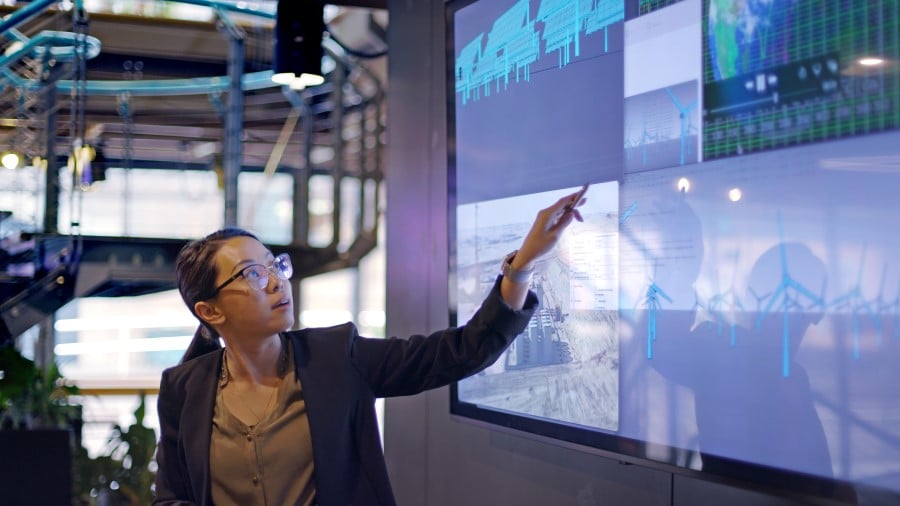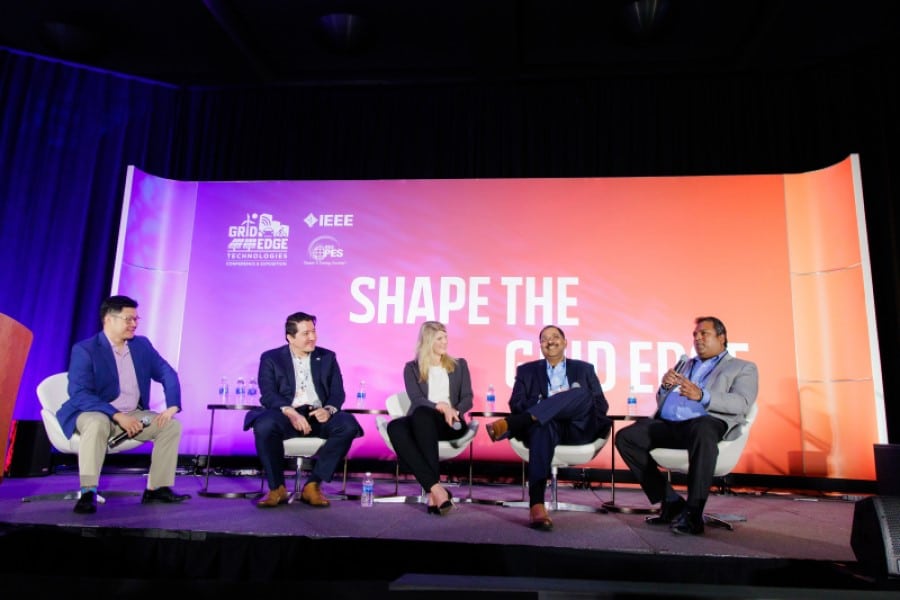Notizie per Categorie
Articoli Recenti
- [In preview] Generally Available: Azure NetApp Files cross-zone-region replication (CZRR) 16 Dicembre 2025
- [In preview] Public Preview: Azure NetApp Files advanced ransomware protection 16 Dicembre 2025
- Defending against the CVE-2025-55182 (React2Shell) vulnerability in React Server Components 15 Dicembre 2025
- Microsoft named an overall leader in KuppingerCole Leadership Compass for Generative AI Defense 15 Dicembre 2025
- Update: The retirement date for default outbound access has been extended to March 31, 2026. 12 Dicembre 2025
- [In preview] Public Preview: Azure Databricks Dashboard subscriptions now support Microsoft Teams 11 Dicembre 2025
- [Launched] Generally Available: Azure Sphere OS version 25.12 is now available for evaluation 11 Dicembre 2025
- Imposter for hire: How fake people can gain very real access 11 Dicembre 2025
- From awareness to action: Building a security-first culture for the agentic AI era 10 Dicembre 2025
- Clarity in complexity: New insights for transparent email security 10 Dicembre 2025
Microsoft highlights innovation in power and utilities
Over the last few months, we’ve touched on multiple topics and trends in energy underscored by one key themethe transition to clean energy. While demand continues to rise for safe, affordable, and reliable clean energy, meeting that need and ensuring affordability, safety, access, and resilience remains challenging.
In nearly every conversation I have with industry executives, we discuss the headwinds facing the industry from inflation and supply chain constraints to ambitious policy goals, rising cybersecurity risk, and extreme climate events. Yet no matter how large or complex the challenges are, we always turn to opportunity, solutions, and how we will accomplish more together.
This was exactly the tone at IEEE Grid Edge 2023 with leaders from Eaton, Landis+Gyr, and Siemens. We discussed the accelerating transition towards a digital grid, the importance of collaboration across disciplines, the leap-forward potential of generative AI, and the necessity of partnerships to turn our toughest challenges into our greatest successes.
As we head into summer, I’m excited to share highlights from this past spring including a large language models (LLM) use case at Ontario Power Generation, key takeaways from DISTRIBUTECH 2023, and how our partners are restoring power to communities impacted by extreme weather events. We also launched two new video series with recent expert speakers covering policy and partnershipsyou won’t want to miss them.
Ontario Power Generation transforms operations with ChatGPT
ChatGPT provides real solutions to real challenges that the power and utilities sector is facing. Leading energy companies are already harnessing the power of generative AI and LLM to improve productivity, safety, and performance. Ontario Power Generation worked closely with Microsoft to implement Microsoft 365 infused with AI capabilities. Innovations include an AI-powered chatbot called ChatOPG designed to communicate with employees using natural language processing. ChatOPG functions as a digital personal assistant, answering specific questions on topics ranging from IT support and HR processes to creating step-by-step troubleshooting plans based on past equipment failures, saving staff time and helping to connect them with essential information.
The power of partnerships at DISTRIBUTECH 2023
Earlier this year at DISTRIBUTECH 2023 in San Diego, the Microsoft Energy team joined customers, partners, and industry leaders to discuss electric vehicle integration, substation automation and renewable energy optimization, and much more.
We showcased the Microsoft technology platform and innovations with 12 partners at our booth including Accenture, Avangrid, Awesense, Bentley, Cognite, EnXchange, eSmart Systems, InnovationForce, Itineris, Itron, Neudesic, NODES, PXiSE, Schneider Electric, Sonata, TerraPraxis, Thread (Airtonomy), and Uptake. Together, we showcased what the future holds for data analytics, grid modernization and grid edge technologies, digital workforce enablement, collaboration, and cybersecurity.
It was no surprise that renewable energy management and accelerating the energy transition were top of mind and took center stage across all sessions. Imperatives include grid modernization, Distributed Energy Resource Management Solutions (DERMS), Advanced Distribution Management Systems (ADMS), and the need to harness digital technology to achieve these transformative goals.
Another important topic was improving digital customer engagement and robust cybersecurity. Across initiatives, gaining actionable insights from huge volumes of data was recognized as essential for addressing the grid’s future resiliency, digitalization, and decentralization.
Accelerating to net zero with Portland General Electric and InnovationForce
To meet aggressive decarbonization targets for 2030, Portland General Electric (PGE) needed a technology platform that could exponentially increase the volume and quality of ideas in its innovation program. PGE turned to InnovationForce for a revolutionary platform based on Microsoft Cloud technologies that helps enterprises innovate faster while reducing the time spent per person. The team is testing a wide range of digital transformation technologies including digital twins, augmented reality (AR) and virtual reality (VR), drones, automation, grid edge intelligence, new sensing technologies, and transformation technologies.
More than 50 use cases are being tested, with learnings documented and shared in an Innovation Hub with dashboard reporting. The project has already vetted ideas that have identified as much as USD500 million in CAPEX and USD500 million in OPEX savings and avoided (estimated over 20 years) by use of more affordable, disruptive digital technology.
Bringing cleaner energy to disaster response
From decarbonization to disaster-recovery, alternative energy sources enable resilience. Based in New Orleans, Louisiana, the Footprint Project is a nonprofit organization that deploys solar-powered resources to communities impacted by catastrophic weather events. The nonprofit teamed with Schneider Electric, a leading Microsoft Cloud Partner and sustainability leader. The Footprint Project’s microgrids, which combine power from multiple sources, collects data from solar generators using Schneider Electric’s microgrid technology built on Microsoft Azure.
Time magazine included Footprint’s microgrids on Time’s List of Best Inventions of 2022, and the partnership was featured at the World Economic Forum’s annual meeting in January 2023. The work was also highlighted as part of the Microsoft #BuildFor2030 Initiative for its impact in helping advance the United Nations Sustainable Development Goals.
The work we do with our energy customers and partners underscores the power of innovation and how technology is boosting momentum for cleaner energy in the power and utilities sector. To meet global demand for safe, reliable, and clean energy, Microsoft will continue to partner with the energy industry on innovative solutions that accelerate the transition to a more sustainable future.
Stay current on energy trends with The Short Circuit and Top Trends in Energy video series
- In the first episode of The Short Circuit, Darryl Willis, Microsoft’s Corporate Vice President, Energy and Resources Industry, interviews special guest Tom Deitrich, President and CEO of Itron. A global leader in the power and utilities sector, Itron is driving some of the most significant advancements in smart meters and smart grids to enable a resilient, secure, and low-carbon power grid. To hear about ways that data and analytics are shaping the energy transition, watch the interview on YouTube. Make sure to subscribe to the channel and click the bell for alerts on new videos including discussions with Ontario Power Generation (OPG) and Constellation.
- We also just launched the Top Trends in Energy video series and I was pleased to be joined by the CEO of GridWise Alliance Dr. Karen Wayland to talk about Modernizing the energy grid. Learn how the Inflation Reduction Act (IRA) and the Infrastructure Investment and Jobs Act (IIJA) in the United States create opportunities for investment in digital infrastructure and discover how companies are implementing new technologies, data-driven approaches, and investment strategies to manage the growing demand on the grid. As more technology is added to the grid, more data will be generated, making cloud storage and data analytics critical components of grid modernization.
- In the episode Harnessing the data revolution in the power and utilities industry with Bilal Khursheed, Director, Americas Power and Utilities Industry, Microsoft, and Gina Weber, Utility Analytics Institute Managing Director, learn how data analytics serves as a bridge between technology, real-world applications, and customer service. By adopting a data-driven approach, power and utilities companies are making better decisions, increasing efficiency, and boosting security.
- In Building momentum in the transition to clean energy with Chris Arend, Business Applications Sales ExecutiveSouth Region, Microsoft and Bill Kent, Executive Director at the Association of Energy Engineers, hear about the role of data and technology in predicting energy needs, stabilizing market pricing, and controlling supply and demand outputs. Energy companies have the advantage of optimizing existing infrastructure and assets to accelerate decarbonization and transition to a clean energy future.
Stay tuned for more from the Microsoft Energy Team, our partners, and our customers as we work together to power a sustainable future.
Additional Resources
- 3 key takeaways from CERAWeek 2022 and a cleaner future for the energy transition.
- Learn more about themes and actions critical for energy transition.
- Read more about how Microsoftpartners with energy companiesto accelerate digital transformation.
- Microsoft bringsmixed reality and new immersive collaboration toolsto industrial metaverse customers.
- Learn more about how Microsoft works toenable the sustainable growth of renewablesin the mining industry.
- Enable yourdata to do more in the cloudwith our energy data manager.
- To learn how to attract, train, and retain employees for your next-generation workforce, visit our transform your workforce employee retention website.
- To learn more about Microsoft for Energy and Resources, visit ourfuture of energy industry solutions website.
Microsoft for Energy and Resources
Transform the energy and resources industry and achieve net zero.

The post Microsoft highlights innovation in power and utilities appeared first on Microsoft Industry Blogs.
Source: Microsoft Industry Blog


